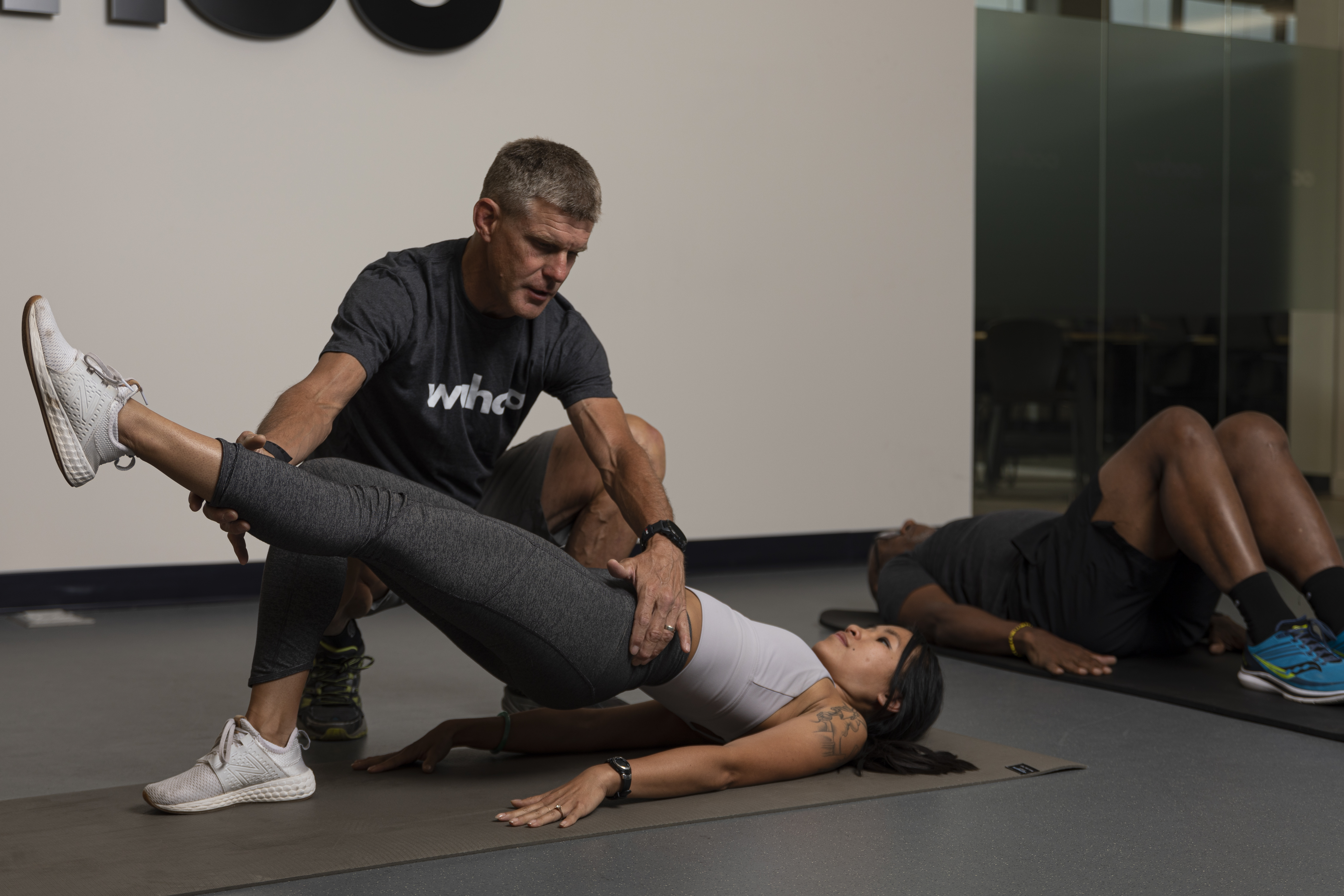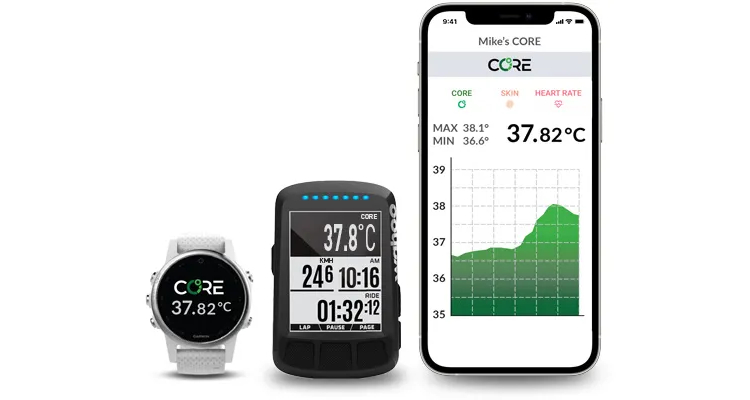The future of training: Wahoo reveals long-term plan
Wahoo's Head of Sports Science, Neal Henderson, opens up on his vision for the future of Wahoo's ecosystem

Just a few weeks ago, Wahoo announced the opening of its brand new Sports Science Centre in Boulder, Colorado.
With it came numerous claims, vague in their respective detail, that the new facility would provide benefits to the Wahoo customer, such as the quote on the Wahoo website, which says the centre will "develop effective protocols for everyday athletes, delivered in the Wahoo Systm training app."
However, on face value, the facility appeared to be exclusive; reserved for Wahoo’s sponsored pro athletes or, at a stretch, those based within reach of Boulder. Wanting more detail, I caught up with Wahoo’s Head of Sports Science, Neal Henderson, to get the lowdown of exactly what’s there, what it’s for, and most importantly, how it’s able to benefit Wahoo’s paying customers from around the world.
The short answer to this question is “research” but the long answer unearthed Wahoo’s long-term play, which, if it comes to fruition, suggests an exciting future ahead for data-driven cyclists.
“We are basically a research and development facility,” explained Henderson. "Predominantly, the research and development is for improving the products that we have, both from the software offerings within Systm and RGT, as well as all Wahoo hardware, and the interactions and integrations within each."
But before we dive into what those interactions and integrations are exactly, let’s take a look at exactly what fills the new Sports Science Centre.
The first thing Henderson mentions is a swim flume; a continuous pool that enables coaches to analyse the mechanics of an athlete’s movement. Henderson himself began his career as a swim coach, and his eyes light up at its mention.
There’s also a large area dedicated to laboratory-style testing: VO2Max testing, Lactate testing, core temperature sensor (using both the Core brand and otherwise) testing, and so on. Do you know how much fat and carbohydrate you burn at a given intensity? Neither do we, but Wahoo can find out.
Get The Leadout Newsletter
The latest race content, interviews, features, reviews and expert buying guides, direct to your inbox!
There's also a room dedicated to dialling bike fit; a strength room laden with free weights, ropes, bands and more; podcasting studios and conference rooms; as well as a studio filled with Kickr Bikes, suggesting Wahoo has its eyes on the Peloton model of spin-style workouts.
As for how all that translates into an improved experience for Wahoo customers, a clue lies in Wahoo’s existing product portfolio: Indoor cycling hardware such as turbo trainers and smart bikes, power meter pedals, heart rate monitors, smart watches, GPS computers and software to capture all that data.
At the launch of Systm in 2021, Wahoo suggested it would eventually become the centre of the Wahoo universe, and Henderson’s claims have today shed some light on exactly what that might look like.

The future of coaching
Imagine a world in which algorithms have replaced coaches and you might be somewhere on the right track. Of course, numbers and computers can never truly replicate the human connection and understanding that defines a good coach, but with the ever-growing number of sensors available that allow us to track our health and turn it into data, there can be a lot of different ways to measure and quantify how we’re performing and feeling. Using that data correctly could unlock some serious optimisation when prescribing training sessions. However, such a richness of data can also provide a lot of noise, with little clarity if you don't know how to use it.
Henderson is wise enough not to name names, but calls out the current state of play, in which he says certain competitors are quick to label a workout as unproductive without a complete picture of an athlete’s physical and psychological load. TSS and CTL don’t provide anywhere near the full picture.
As for how Wahoo intends to improve on this, there is no silver bullet, rather a collection of iterative improvements across its entire portfolio.
Hardware improvements to Wahoo's Elemnt Rival smartwatch could allow it to track more metrics, in addition to the heart rate it can currently monitor. Depending on how far Wahoo takes this, the Rival could even become a direct competitor to Whoop, but as yet, even Wahoo doesn’t know, as the research is ongoing.
On the software side, Wahoo Systm’s main competitor is arguably TrainerRoad, a brand which is currently forging a similar path toward autonomy. Its Adaptive Training feature uses machine learning and adjusts your training plan based on your recent progress and responses to post-ride surveys that ask how hard you felt each session.
Henderson suggests Systm is working toward a similar strategy, allowing the app to use data to drive a dynamic training plan.
For example, data captured by your Elemnt Rival, Powrlink pedals, Elemnt computers and Kickr turbo trainers will provide your physical output, pedalling dynamics and more. Meanwhile, your Elemnt Rival and Tickr heart rate monitor could provide heart rate variability, skin temperature, core temperature, breathing rate and more.

Or Wahoo could work with third-party sensors such as Whoop for recovery data, Core for core body temperature and heat acclimation data, and Supersapiens (a company whose board of directors features none other than Wahoo founder and CEO, Chip Hawkins), which would provide glucose data (and in future, lactate data).
All the while, Systm, RGT or your Wahoo X app could capture a regular insight into your mental state.
"Training is not just an external output," Henderson explains. "When we go and do training, we're not training robots, so external mechanical output doesn't tell the entire story."
Pointing to his head, Henderson continues "What's going on here? What happens between the ears? Psychologically, how difficult is a given workout? How stressed were you when completing that task? External output won't tell you anything about that. The heart rate alone won't tell you that. The combination of those three things [external output, cardiovascular response and psychological response] give you a lot more insight."
And that takes us nicely back to the 'interactions and integrations' mentioned earlier. At the moment, Wahoo uses 4DP (four-dimensional power) to quantify a cyclist’s ‘rider profile’, based on results from a test of 20-minute, five-minute, one-minute and five-second power.
Henderson says that FTP alone doesn’t provide a clear enough picture of a rider’s capabilities, and that an athlete’s neuromuscular limit (ie, their maximum sprint) can range from 200% FTP, where a rider with 300w FTP could top out at 600w in a sprint; to 800%, where that same FTP would be accompanied by a 2400w sprint. Therefore, to ask those two athletes to follow the same training plan would be unproductive, or perhaps even impossible.
To summarise that simply – more data equals more insight, so why stop there? Wahoo’s intention is to utilise as much data as it possibly can, from a variety of sensors to inform its algorithms. Then, if for example your resting heart rate, core temperature and recent mood all suggest illness or fatigue, it can suggest an easier workout instead of the planned 3 x 20 at FTP you were initially prescribed.
And to steer this article full circle, it’s the accuracy of those available sensors, the quality of the data they provide, and the best ways in which to integrate everything into Wahoo’s products that is being researched at the new Sports Science Centre in Boulder, so it looks as though Wahoo’s users will indeed benefit.
Unfortunately, however, this isn’t going to be a quick process. The first updates might be seen before the end of 2022, Henderson confirms, but this is a series of iterative improvements that could - and in all likelihood will - span years.

Josh is Associate Editor of Cyclingnews – leading our content on the best bikes, kit and the latest breaking tech stories from the pro peloton. He has been with us since the summer of 2019 and throughout that time he's covered everything from buyer's guides and deals to the latest tech news and reviews.
On the bike, Josh has been riding and racing for over 15 years. He started out racing cross country in his teens back when 26-inch wheels and triple chainsets were still mainstream, but he found favour in road racing in his early 20s, racing at a local and national level for Somerset-based Team Tor 2000. These days he rides indoors for convenience and fitness, and outdoors for fun on road, gravel, 'cross and cross-country bikes, the latter usually with his two dogs in tow.